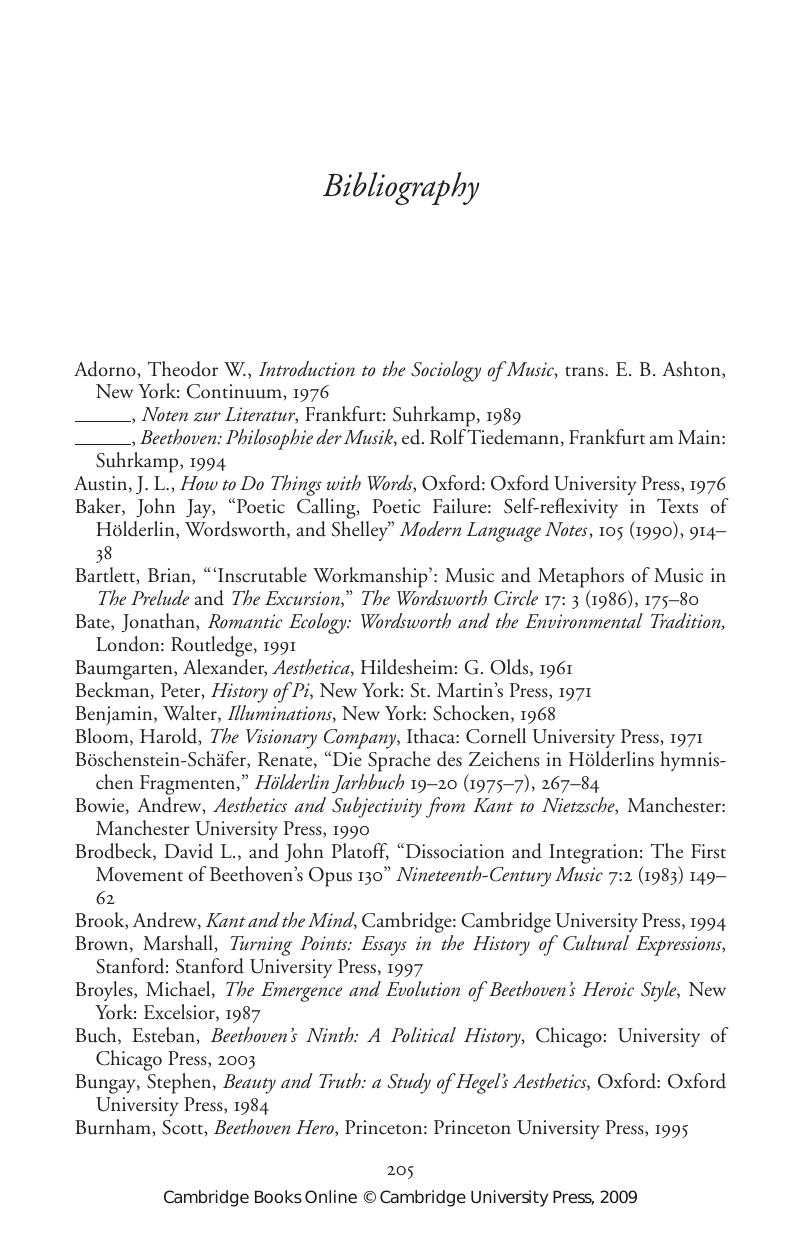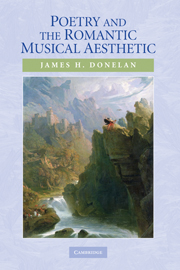Book contents
- Frontmatter
- Contents
- List of Musical Examples
- Acknowledgments
- Preface: The Sound and the Spirit
- Chapter 1 Self-Consciousness and Music in the Late Enlightenment
- Chapter 2 Hölderlin's Deutscher Gesang and the Music of Poetic Self-Consciousness
- Chapter 3 Hegel's Aesthetic Theory: Self-Consciousness and Musical Material
- Chapter 4 Nature, Music, and the Imagination in Wordsworth's Poetry
- Chapter 5 Beethoven and Musical Self-Consciousness
- Chapter 6 The Persistence of Sound
- Notes
- Bibliography
- Index
- References
Bibliography
Published online by Cambridge University Press: 22 September 2009
- Frontmatter
- Contents
- List of Musical Examples
- Acknowledgments
- Preface: The Sound and the Spirit
- Chapter 1 Self-Consciousness and Music in the Late Enlightenment
- Chapter 2 Hölderlin's Deutscher Gesang and the Music of Poetic Self-Consciousness
- Chapter 3 Hegel's Aesthetic Theory: Self-Consciousness and Musical Material
- Chapter 4 Nature, Music, and the Imagination in Wordsworth's Poetry
- Chapter 5 Beethoven and Musical Self-Consciousness
- Chapter 6 The Persistence of Sound
- Notes
- Bibliography
- Index
- References
Summary

- Type
- Chapter
- Information
- Poetry and the Romantic Musical Aesthetic , pp. 205 - 212Publisher: Cambridge University PressPrint publication year: 2008

